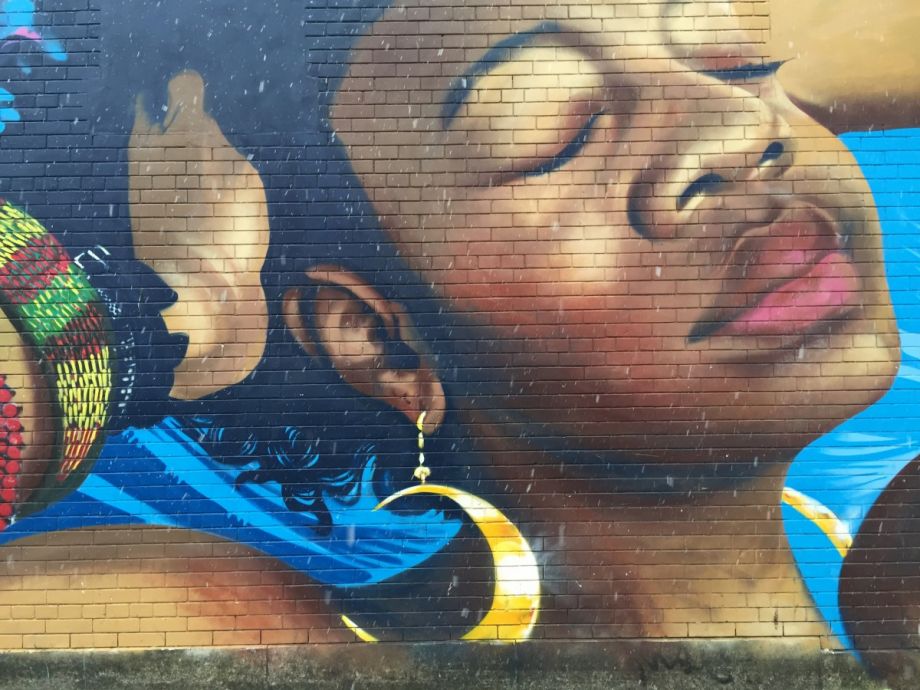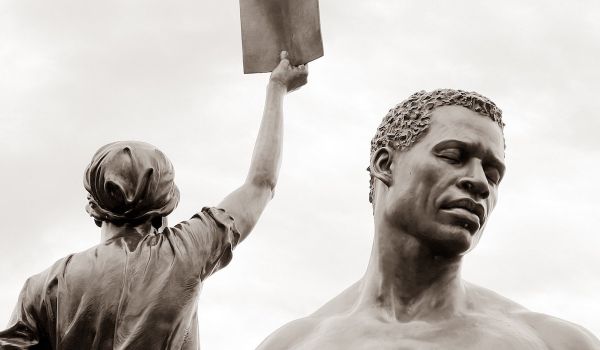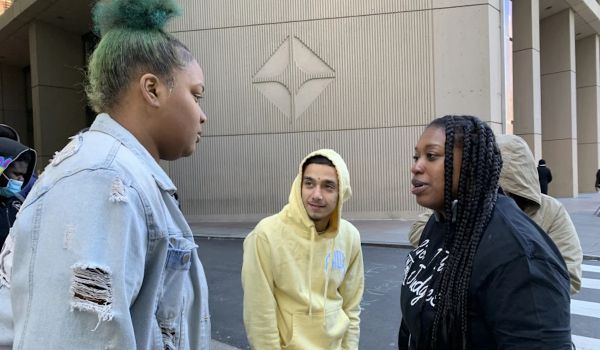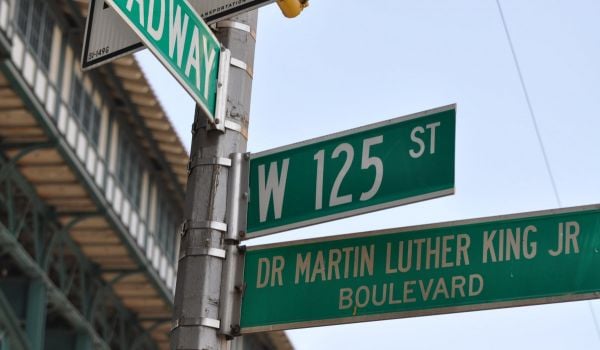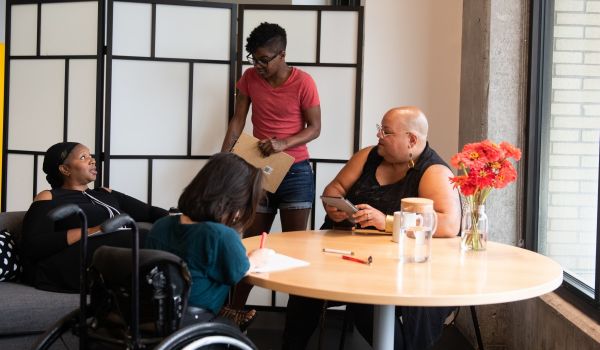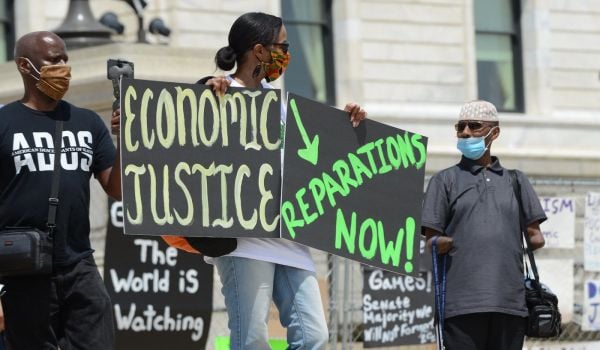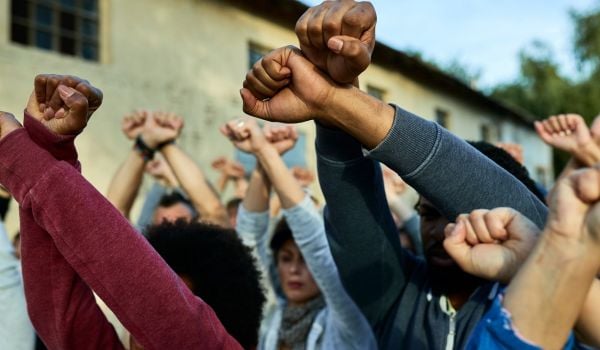In the wake of a tumultuous year, many are newly aware of the structural racism at the root of American society. Across the nation, businesses, nonprofits and other institutions are seeking to identify and dismantle racist structures and practices. It’s a daunting task.
Fortunately, we are not starting from scratch. A diverse group of nonprofits working in community development, arts and culture have walked the antiracist path for years. These groups harness the creativity and imaginative power of artists and residents to envision and build a more inclusive future. Lessons learned from their work can be of use to everyone who seeks a more equitable, prosperous and healthy America.
This group of 27 nonprofits recently came together during a two-day virtual event titled the Racial Equity Exploration and Discovery (REED) initiative, hosted by The Kresge Foundation. (Editor’s note: The Kresge Foundation supports Next City.) They included leaders of organizations working on community development, arts and culture to exchange ideas about ways to advance racial justice through culture and creative practices.
They shared a range of practices, aspirations and commitments that can produce equitable opportunities and outcomes. While the organizations represented at the convening take a range of approaches, they agreed on five core practices to embrace:
1. Build power by shaping the narrative.
CatchLight — a media organization that borrows from practices of art, journalism and social justice — supported Yesica Prado in creating a short film illustrating the culture of vehicular living in the Bay Area. The film explores how policies and regulations affect people living in their cars and RVs during the COVID-19 pandemic. (See Yesica’s film here.)
To make sure this work is empowering rather than extractive, it’s important to pay people fairly for their creative work. This could include hiring artists as full-time staff with full pay and benefits and hiring directly from the communities in which you work.
Operation Restoration, in partnership with the Newcomb Art Museum of Tulane University, created the (Per)sister exhibit to hold space for currently and formerly incarcerated women in Louisiana to share their stories. In the process, Operation Restoration negotiated a payment to the women for their time and stories plus royalties received from the sale of the exhibit’s paintings.
Funders can help by investing in the capacity and leadership of artists and residents —particularly those who are women and/or people of color. They can also ensure that people who are sharing their stories can share them directly with people in power.
2. Leverage creativity and the arts to address difficult topics.
Art—including stories, visuals and performances—can help build empathy, challenge deeply held beliefs, drive change and promote healing. Art can lower defense mechanisms and help people engage meaningfully in difficult work. And art can create space to co-create new visions for the community—such as alternatives to traditional policing.
For example, to create safe and healthy communities, Mixed Blood has used oral histories and theatrical town halls as a platform for residents to share their stories and facilitate community conversations about policing. The nonprofit has also brought police and residents together, using acting exercises to switch roles and build empathy and understanding.
When using creativity and the arts to catalyze critical conversations, it’s important to consider augmenting the artistic offering with political education to help people see steps they can take to make change. Also, recognize the pressure you are putting on artists when asking them to help address difficult topics in your community. Support them in helping people move through discomfort to engage in difficult conversations.
3. Work outside of institutions and structures that aren’t working for people of color.
Capitalist structures run counter to the values and practices that are fundamental to collective liberation. And yet, nonprofit leaders must find ways to work within capitalist systems to secure the resources needed to survive.
When philanthropy, government and other systems are slow to adopt equitable practices, some organizations are funding artists directly through platforms such as GoFundMe or Venmo.
Many nonprofits are collaborating to fund their work in ways that do not rely on institutional funders. They are finding ways to work with greater autonomy, such as by establishing independent production companies. Others maintain accessible, low-rent or co-operatively owned spaces for artists to work.
4. Create space for rest and healing.
Social change is rewarding but difficult; those working to advance racial justice need space for rest, restoration and healing. For too long, the nonprofit sector has incentivized martyrdom and a pace of work that is unsustainable. The Nap Ministry says “rest is a form of resistance because it disrupts and pushes back against capitalism and white supremacy.”
First, name rest as an organizational commitment. Be mindful of pace, asking, “What am I getting out of this? When can I rest?” Take intentional pauses as an organization (e.g., a week where the office is closed) so staff can enjoy down time without as much work piling up while they’re away.
And finally, plan “meeting-free” days so staff can have quiet time for reflection, planning, and catching up.
5. Support community development, arts and culture organizations to advance racial justice.
Creativity and culture are critical drivers of racial justice in communities. As REED participants shared their practices to advance racial justice, they also identified supports they need from funders and other system actors. These include increased funding, allyship and openness to new ideas and ways of thinking.
By changing the way they fund and partner with community development, arts and culture groups, funders and other well-resourced organizations can end deeply rooted inequitable practices and better support BIPOC artists and residents who are advancing racial justice.
Carla Taylor is Senior Director of Community Wealth Partners.
Michelle D. Johnson is senior program officer of The Kresge Foundation.

